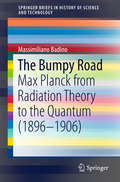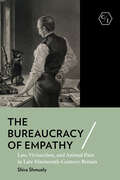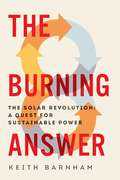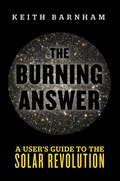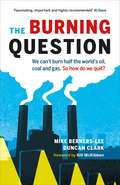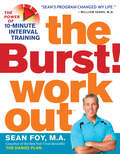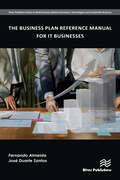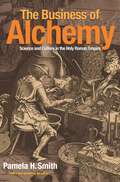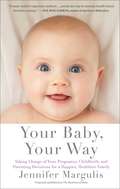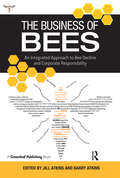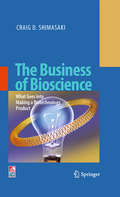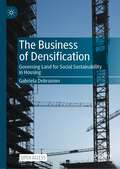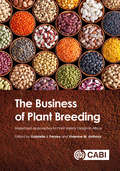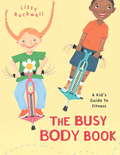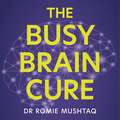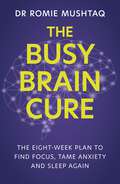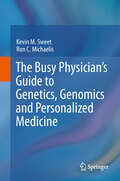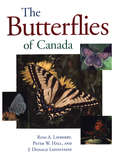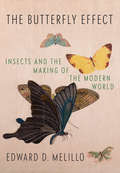- Table View
- List View
The Bumpy Road
by Massimiliano BadinoThis book examines the different areas of knowledge, traditions, and conceptual resources that contributed to the building of Max Planck's theory of radiation. It presents an insightful comparative analysis that not only sheds light upon a fundamental chapter in the history of modern physics, but also enlarges our understanding of how theoreticians work. Coverage offers a deep investigation into the technical aspects behind the theory and extends in time the notion of quantum revolution. It also presents a full-fledged discussion of the combinatorial part of Planck's theory and places emphasis on the epistemological role of mathematical practices. By painstakingly reconstructing both the electromagnetic and the combinatorial part of Planck's black-body theory, the author shows how some apparently merely technical resources, such as the Fourier series, effectively contributed to shape the final form of Planck's theory. For decades, historians have debated the conditions of possibility of Max Planck's discovery as a paradigmatic example of scientific revolution. In particular, the use of combinatorics, which eventually paved the way for the introduction of the quantum hypothesis, has remained a puzzle for experts. This book presents a fresh perspective on this important debate that will appeal to historians and philosophers of science.
The Bureaucracy of Empathy: Law, Vivisection, and Animal Pain in Late Nineteenth-Century Britain (Corpus Juris: The Humanities in Politics and Law)
by Shira ShmuelyThe Bureaucracy of Empathy revolves around two central questions: What is pain? And how do we recognize, understand, and ameliorate the pain of nonhuman animals? Shira Shmuely investigates these ethical issues through a close and careful history of the origins, implementation, and enforcement of the 1876 Cruelty to Animals Act of Parliament, which for the first time imposed legal restrictions on animal experimentation and mandated official supervision of procedures "calculated to give pain" to animal subjects.Exploring how scientists, bureaucrats, and lawyers wrestled with the problem of animal pain and its perception, Shmuely traces in depth and detail how the Act was enforced, the medical establishment's initial resistance and then embrace of regulation, and the challenges from anti-vivisection advocates who deemed it insufficient protection against animal suffering. She shows how a "bureaucracy of empathy" emerged to support and administer the legislation, navigating incongruent interpretations of pain. This crucial moment in animal law and ethics continues to inform laws regulating the treatment of nonhuman animals in laboratories, farms, and homes around the worlds to the present.
The Burnhope Wheel
by Susan GatesThe Burnhope Wheel tells the story of Ellen and Dave, two teens who have a strange attraction to the abandoned Burnhope lead mine. Ellen finds a photograph of two miners who were killed in an accident, and soon after begins hearing the voice of one of the miners in her head. Together, Ellen and Dave find the treasure that had led to the deaths of the two miners, and almost meet the same fate themselves when the mine suddenly seems to come alive and the dead miner gains control over Ellen's mind.
The Burning Answer: A Quest for Sustainable Power
by Keith BarnhamUsing the little-known equation E=hf as the foundation for a compelling new vision, The Burning Answer reveals the importance of embracing solar energy as the only solution to the global energy crisis. Our society faces a choice. We could be enjoying a sustainable lifestyle but we have chosen not to. In three generations we have consumed half the oil produced by photosynthesis over eight million generations. In two generations we have used half our uranium resources. With threats from global warming, oil depletion and nuclear disaster, we are running out of options. Solar power, as Keith Barnham explains, is our necessary solution. In The Burning Answer he uncovers the connections between physics and politics that have resulted in our dependence on a high-carbon lifestyle, which only a solar revolution can now overcome. Einstein's famous equation E=mc2 led to the atomic bomb and the widespread use of nuclear energy; it has delayed a solar revolution in many countries. In a fascinating tour of recent scientific history, Keith Barnham reveals Einstein's other, less famous equation, the equation the world could have relied on. Barnham explains that the roots of solar energy lie in a little known equation E=hf, an equation which was coincidentally celebrated (and explained to the world) by Einstein in the same year he discovered E=mc2. He alleges that the former equation has been overlooked in favor of the latter, much to our detriment, and Barnham is here to offer us a solution: We can still turn things around and solar energy is the key. While everyone is aware of solar energy, people are still not paying enough attention, and so as well as explaining the science behind it, Barnham takes his subject forward to advise on what we should be doing to utilize this amazing energy source. In this provocative, inspiring, passionately argued book, Keith Barnham outlines actions that any one and all of us can take to make an impact now and on future generations. The Burning Answer is a solar manifesto for the new climate-aware generation and a must-read for climate-change skeptics.
The Burning Answer: A User's Guide to the Solar Revolution
by Professor Keith BarnhamOur civilisation stands on the brink of catastrophe. Our thirst for energy has led to threats from global warming, nuclear disaster and conflict in oil-rich countries. We are running out of options.Solar power, Keith Barnham argues, is the answer. In this eye-opening book, he shows how a solar revolution is developing based on one of Einstein's lesser known discoveries, one that gave us laptop computers and mobile phones. An accessible guide to renewable technology and a hard-hitting critique of the arguments of solar sceptics, The Burning Answer outlines a future in which the fuel for electric cars will be generated on our rooftops. It is, above all, an impassioned call to arms to join the solar revolution before it's too late.
The Burning Answer: A Users Guide to the Solar Revolution
by Keith BarnhamOur civilisation stands on the brink of catastrophe. Our thirst for energy has led to threats from global warming, nuclear disaster and conflict in oil-rich countries. We are running out of options.Solar power, Keith Barnham argues, is the answer. In this eye-opening book, he shows how a solar revolution is developing based on one of Einstein's lesser known discoveries, one that gave us laptop computers and mobile phones. An accessible guide to renewable technology and a hard-hitting critique of the arguments of solar sceptics, The Burning Answer outlines a future in which the fuel for electric cars will be generated on our rooftops. It is, above all, an impassioned call to arms to join the solar revolution before it's too late.
The Burning Question
by Bill Mckibben Duncan Clark Mike Berners-LeeThe Burning Question reveals climate change to be the most fascinating scientific, political and social puzzle in history. It shows that carbon emissions are still accelerating upwards, following an exponential curve that goes back centuries. One reason is that saving energy is like squeezing a balloon: reductions in one place lead to increases elsewhere. Another reason is that clean energy sources don't in themselves slow the rate of fossil fuel extraction.Tackling global warming will mean persuading the world to abandon oil, coal and gas reserves worth many trillions of dollars - at least until we have the means to put carbon back in the ground. The burning question is whether that can be done. What mix of politics, psychology, economics and technology might be required? Are the energy companies massively overvalued, and how will carbon-cuts affect the global economy? Will we wake up to the threat in time? And who can do what to make it all happen?
The Burst! Workout: The Power of 10-Minute Interval Training
by Sean Foy M.A.Here from Sean Foy—exercise physiologist and coauthor of the million-copy bestseller The Daniel Plan—is The Burst! <P><P>Workout, a complete program for 10-minute interval and circuit workouts that can be done practically anywhere, anytime. Study after study proves the effectiveness of high-intensity interval training. Now, here’s exactly how to do it: four minutes to raise the heart rate and metabolism; three minutes of resistance training to strengthen muscles and bones; two minutes of core movements for the abs and back; one minute of deep breathing and stretching (a vital component missing from other popular highintensity circuit programs). <P>The book features three four-week programs: Level 1, with no equipment required, perfect for the office (and fighting the “sitting disease”); Level 2, with minimal equipment; and Level 3, which brings interval training to the gym. The simple, scientifically devised exercises are illustrated with step-by-step photographs and are easy to master. The results are astonishing: The workouts boost metabolic rate, promote weight loss, target all the major muscle groups, increase cardiovascular endurance, have a positive effect on cholesterol levels and blood pressure, and deliver a sense of well-being. All in just a few minutes a day.
The Business Plan Reference Manual for IT Businesses
by Fernando Almeida José SantosThere is a great worldwide desire to launch new technology-based business. In this sense, and increasingly, entrepreneurship courses have arisen in several universities and many of the courses in the management, administration and engineering areas already offer entrepreneurship curricular units. Throughout those programs, the teams develop key integrated competencies in innovation, entrepreneurship and technology that will ultimately enable the students to create and develop new technology-based businesses. The Business Plan Reference Manual for IT Businesses provides a reference manual for undergraduate and graduate students that intend to launch their start-up business in the IT field. It helps them to create and model the business plan of their business. Therefore, this manual is mainly aimed at instructors who want to offer a practical view of the process of modeling, designing and developing an IT start-up. Additionally, it can be individually used by entrepreneurs who wish to launch their start-up businesses in IT field. The structure of the book was defined taking into account different approaches to the construction of the business plan, which basically consider a disaggregation of some of these chapters in others smaller (e.g., marketing plan into products/services and market, financial plan into investment plan and economic-financial projections). We chose to aggregate these dimensions into a single chapter, which in our view facilitates the process of analyzing a business plan. It is also relevant to mention the inclusion of “Chapter V – Prototype description” which is innovative and intends to take into account the application of this business plan template to the information technology sector.
The Business of Alchemy: Science and Culture in the Holy Roman Empire
by Pamela H. SmithIn The Business of Alchemy, Pamela Smith explores the relationships among alchemy, the court, and commerce in order to illuminate the cultural history of the Holy Roman Empire in the sixteenth and seventeenth centuries. In showing how an overriding concern with religious salvation was transformed into a concentration on material increase and economic policies, Smith depicts the rise of modern science and early capitalism. In pursuing this narrative, she focuses on that ideal prey of the cultural historian, an intellectual of the second rank whose career and ideas typify those of a generation. Smith follows the career of Johann Joachim Becher (1635-1682) from university to court, his projects from New World colonies to an old-world Pansophic Panopticon, and his ideas from alchemy to economics. Teasing out the many meanings of alchemy for Becher and his contemporaries, she argues that it provided Becher with not only a direct key to power over nature but also a language by which he could convince his princely patrons that their power too must rest on liquid wealth. Agrarian society regarded merchants with suspicion as the nonproductive exploiters of others' labor; however, territorial princes turned to commerce for revenue as the cost of maintaining the state increased. Placing Becher’s career in its social and intellectual context, Smith shows how he attempted to help his patrons assimilate commercial values into noble court culture and to understand the production of surplus capital as natural and legitimate. With emphasis on the practices of natural philosophy and extensive use of archival materials, Smith brings alive the moment of cultural transformation in which science and the modern state emerged.
The Business of Baby
by Jennifer MargulisWhy, despite our state-of-the-art medical technology, does the United States have among the highest maternal and infant mortality rates in the industrialized world? Why do pregnant women who are planning to breastfeed receive "free" samples of infant formula from American obstetricians? Why are American newborns given a vaccine at birth against hepatitis B, a sexually transmitted disease? The Business of Baby, an eye-opening work of investigative journalism, exposes how our current cultural practices during pregnancy, childbirth, and the first year of a baby's life are not based on the best evidence or the most modern science, revealing how American moms and their babies are being undermined by corporate interests. An illuminating combination of meticulous research and in-depth interviews with parents, doctors, midwives, nurses, health care administrators, and scientists, Margulis's impassioned and eloquent critique is shocking, groundbreaking, and revelatory. The Business of Baby arms parents with the information they need to make informed decisions about their own health and the health of their infants.
The Business of Baby
by Jennifer MargulisWhy, despite our state-of-the-art medical technology, does the United States have among the highest maternal and infant mortality rates in the industrialized world? Why do pregnant women who are planning to breastfeed receive "free" samples of infant formula from American obstetricians? Why are American newborns given a vaccine at birth against hepatitis B, a sexually transmitted disease? The Business of Baby, an eye-opening work of investigative journalism, exposes how our current cultural practices during pregnancy, childbirth, and the first year of a baby's life are not based on the best evidence or the most modern science, revealing how American moms and their babies are being undermined by corporate interests. An illuminating combination of meticulous research and in-depth interviews with parents, doctors, midwives, nurses, health care administrators, and scientists, Margulis's impassioned and eloquent critique is shocking, groundbreaking, and revelatory. The Business of Baby arms parents with the information they need to make informed decisions about their own health and the health of their infants.
The Business of Bees: An Integrated Approach to Bee Decline and Corporate Responsibility
by Jill Atkins Barry AtkinsOur bee populations are under threat. Over the past 60 years, they have lost much of their natural habitat and are under assault from pesticides and intensive farming. We rely on bees and other insects to pollinate our fruit and vegetables and, without them, our environment and economy will be in crisis.The Business of Bees provides the first integrated account of diminishing bee populations, as well as other pollinators, from an interdisciplinary perspective. It explores the role of corporate responsibility and governance as they relate to this critical issue and examines what the impact will be on consumers, companies, stock markets and ultimately on global society if bee populations continue to decline at a dangerous rate.The book considers the issue of global bee population decline from a variety of disciplines, combining the perspectives of academics in accounting, science and humanities with those of practitioners in the finance industry. The chapters explore the impact of the rapid decline in pollinator populations on the natural world, on corporations, on the stock market and on accounting. The Business of Bees will be essential reading for those in academia, business and finance sectors and anyone invested in the future of our planet.
The Business of Bioscience
by Craig D. ShimasakiThe Business of Bioscience: What goes into making a Biotechnology Product captivatingly describes the unique and challenging facets within the exciting field of biotechnology business and medical product innovation. Biotechnology is the melding of business and science and, therefore, creates different challenges than those faced by other industries. There are longer development times, costly product development and clinical trials, unique talent requirements, and a changing regulatory environment. In this book you will find practical answers to: Why does it take so long to develop a biotechnology product? What is involved in making a therapeutic or diagnostic? How much money is needed to develop a product idea from bench to bedside? What are the characteristics and backgrounds of entrepreneurs who lead these organizations? How do you go about starting a biotechnology company? This book contains a wealth of technical, business and leadership insights conveyed with a "behind the scenes" look into the everyday challenges in biotechnology product development. The Business of Bioscience is written in a step-wise fashion building upon precepts and summarizing best practices for establishing and growing a successful biotechnology company. Content is presented in a way that is applicable to the novice, through to the experienced biotech or pharmaceutical executive and will interest all audiences having an interest in this dynamic field. Fundamental topics are covered in informative and interesting detail such as the selection of product development milestones and their impact on the valuation of the company, choosing a company business model and managing risk, hiring a biotech dream team, the virtual company, the regulatory process for approving products through the FDA, clinical trials and objectives and raising multiple forms of capital. Within this book you will also learn practical aspects that can be applied to virtually any organization. Such topics include developing a company culture and its hidden competitive strength; leadership and core values - not just for managers but for all employees; the organizational life stages of a company, when and why management style needs to change. This book is a tremendous resource for scientists, professors, medical researchers, pharmaceutical industry employees, venture capital professionals, biotechnology research analysts, business persons, MBA students and those who have a curiosity about what goes into the development of a biotechnology product. For more information please visit: www.businessofbioscience.com
The Business of Densification: Governing Land for Social Sustainability in Housing
by Gabriela DebrunnerAffordable housing shortage and social exclusion have become severe societal problems across the globe. Increasing numbers of people are suffering from social eviction and displacement due to urban densification, modernization, rising rents, and intense housing commodification. Vulnerable resident groups – such as old-aged or households with children – who often live in old housing stocks planned to be densified, renovated, or upgraded with higher rents, are forced to leave the urban core centers because they can no longer afford to live in central locations, or because they experience unstable or insecure housing conditions. A scenario that is highly unsustainable.So far, studies on densification have mainly considered the process as technological, architectural, or design-based problem (e.g., Kyttä et al., 2013; Broitman & Koomen, 2015; Bibby et al., 2018). However, systematic knowledge on how to implement densification objectives sustainably – regarding economic, environmental, and social aspects – is still lacking. This book tackles this gap by analyzing densification from a governance perspective. Its point of departure is that densification per se does not necessarily lead to sustainable outcomes in terms of social inclusion, cohesion, or community stability. Rather, it politicizes densification by neglecting how the process is planned, implemented, and governed by the actors involved.The book applies an actors-centered neoinstitutionalist political ecology approach to reveal the specific objectives and strategies of actors involved, as well as the socio-political structures (i.e. rules. laws, and policies) that govern densification. Four Swiss in-depth empirical qualitative case studies (Zürich, Basel, Köniz, and Kloten) illustrate the political and legal conditions for success or failure for (un)sustainable implementations of densification. Ultimately, this book advises stakeholders, governments, urban practitioners, and academics on more effective, community-oriented, collective, and decommodified forms of governance to respond to the needs of the public at large rather than simply catering to private individuals and firms. Such governance initiatives entail active municipal land policy approaches outside a purely market-based investment logic that not only limit, but also work with property rights.This is an open access book.
The Business of Plant Breeding
by G. J. Persley V. M. AnthonyThe Business of Plant Breeding is the result of a study on demand-led plant variety design for markets in Africa, sharing best practices from private and public sector breeding programmes worldwide that are applicable to improving tropical crops in Africa. Beginning with an overview of the principles of demand-led plant breeding, the book then discusses aspects such as understanding the demands of clients and markets in rural and urban areas, foresight in setting product profiles and breeding targets, and determining breeding strategy and stage plans. It also covers measuring success and making the business case for future investments in breeding programmes that will deliver new varieties to meet market demands. The book: - Brings together the experience of plant breeders around the world, representing universities, national plant breeding programmes, regional and international agricultural research institutes, and private seed companies, showcasing how to respond to changing market demands; - Provides educational resource materials within each chapter; - Includes templates for use as planning tools by plant breeding programs for determining priority traits that meet market demands. An important read for professionals and students of plant breeding and genetics, this book is also a useful resource for anyone interested in developing and disseminating new, market-led technologies to increase productivity and profitability in tropical agriculture. The study was sponsored by the Australian Centre for International Agricultural Research, the Crawford Fund and the Syngenta Foundation for Sustainable Agriculture, and managed by the University of Queensland.
The Business of Plant Breeding: Market led Approaches to Plant Variety Design in Africa
by Jean Claude Rubyogo Rowland Chirwa Agyemang Danquah Erik Yirenky Danquah Appolinaire Djikeng Shimelis Hussein Paul M. Kimani Heather Merk Ivan Rwomushana Jonathan Shoham Pangirayi Tongoona Nasser YaoThe Business of Plant Breeding is the result of a study on demand-led plant variety design for markets in Africa, sharing best practices from private and public sector breeding programmes worldwide that are applicable to improving tropical crops in Africa. Beginning with an overview of the principles of demand-led plant breeding, the book then discusses aspects such as understanding the demands of clients and markets in rural and urban areas, foresight in setting product profiles and breeding targets, and determining breeding strategy and stage plans. It also covers measuring success and making the business case for future investments in breeding programmes that will deliver new varieties to meet market demands. The book: - Brings together the experience of plant breeders around the world, representing universities, national plant breeding programmes, regional and international agricultural research institutes, and private seed companies, showcasing how to respond to changing market demands; - Provides educational resource materials within each chapter; - Includes templates for use as planning tools by plant breeding programs for determining priority traits that meet market demands. An important read for professionals and students of plant breeding and genetics, this book is also a useful resource for anyone interested in developing and disseminating new, market-led technologies to increase productivity and profitability in tropical agriculture. The study was sponsored by the Australian Centre for International Agricultural Research, the Crawford Fund and the Syngenta Foundation for Sustainable Agriculture, and managed by the University of Queensland.
The Busy Body Book: A Kid's Guide to Fitness
by Lizzy RockwellA celebration of the amazing human machine and a life on the move! Your amazing body can jump, sprint, twist, and twirl. Your body is built to move. Lizzy Rockwell explains how your bones and muscles, heart and lungs, nerves and brain all work together to keep you on the go. Kids walk and skate and tumble through these pages with such exuberance that even sprouting couch potatoes will want to get up and bounce around--and that's the ultimate goal. Studies show that American kids are becoming more sedentary and more overweight and that they carry these tendencies with them into adolescence and adulthood. Experts agree that we need to help kids make physical activity a life-long habit. Through education, information, and encouragement, this book aims to inspire a new generation of busy bodies!
The Busy Brain Cure: The Eight-Week Plan to Find Focus, Tame Anxiety & Sleep Again
by Dr Romie MushtaqAn eye-opening guidebook for professionals looking to overcome their chronic stress, burnout and Busy Brain symptoms using a simple eight-week plan by Dr Romie Mushtaq.Traditional methods in neurology and psychiatry treat anxiety, ADD and insomnia as three separate diseases. The results are an addictive cycle that Dr Romie Mushtaq defines as the Busy Brain, using stimulants like caffeine to stay focused and energised during the day and then using sedatives like alcohol or sleeping pills at night.Based on over twenty years of clinical research and experience, The Busy Brain Cure helps to break the addiction of the stimulant-sedative cycle and restore sleep, sanity and a sense of connection.
The Busy Brain Cure: The Eight-Week Plan to Find Focus, Tame Anxiety & Sleep Again
by Dr Romie MushtaqAn eye-opening guidebook for professionals looking to overcome their chronic stress, burnout and Busy Brain symptoms using a simple eight-week plan by Dr Romie Mushtaq.Traditional methods in neurology and psychiatry treat anxiety, ADD and insomnia as three separate diseases. The results are an addictive cycle that Dr Romie Mushtaq defines as the Busy Brain, using stimulants like caffeine to stay focused and energised during the day and then using sedatives like alcohol or sleeping pills at night.Based on over twenty years of clinical research and experience, The Busy Brain Cure helps to break the addiction of the stimulant-sedative cycle and restore sleep, sanity and a sense of connection.
The Busy Physician’s Guide To Genetics, Genomics and Personalized Medicine
by Kevin M. Sweet Ron C. MichaelisIn the coming decade, the focus of medicine will shift from a disease-oriented approach, where the physician prescribes according to the disease the patient has, to a personalized approach, in which the physician first considers the patient's individual biochemistry before prescribing a treatment. Personalized medicine has the potential to improve efficacy and safety in virtually all fields of medicine. Unfortunately, few physicians feel confident in their ability to apply the principles of genetics and genomics upon which personalized medicine is based to their practice. This book is intended to help the practicing physician understand and apply the principles of genetic and genomic medicine, regardless of his/her level of background in the field. It provides a thorough foundation/review of classical genetic principles, with an emphasis on how these principles apply to personalized medicine and common complex diseases. In addition, it provides a wide-ranging review of the inroads that personalized medicine has made into several fields, including cancer, psychiatric disorders, cardiovascular disease, substance abuse, Alzheimer disease, respiratory diseases, type 2 diabetes and macular degeneration. Most importantly, this book is intended to enable the practicing physician, physician assistants and their entire healthcare team to anticipate the developments that will emerge in the near future, and stay current with the field as it expands.
The Butterflies of Canada
by Peter Hall Don Lafontaine Ross LayberryBeautifully illustrated and clearly presented, The Butterflies of Canada is an indispensable guide to all aspects of butterfly study. Butterfly collecting has long been a popular summer activity, and as the growing popularity of butterfly watching and conservatories in Ontario and British Columbia shows, butterflies are a continuing source of delight and interest to Canadians.The Butterflies of Canada is the first comprehensive guide to all the butterflies found in Canada. Based on the national butterfly collection maintained by Agriculture and Agri-Food Canada, it contains descriptive individual accounts for the close to three hundred butterfly species recorded in Canada, including descriptions of early stages, subspecies, and key features that help distinguish similar species. Each species of butterfly has an individual distribution map, generated from a database of more than 90,000 location records.More than just a field guide to identifying Canadian butterflies, however, The Butterflies of Canada includes chapters on Canadian geography and butterfly distribution, conservation, gardening, photography, and the history of butterfly study in Canada. It also contains new and unpublished information on the classification of butterflies, their ranges, larval food plants, abundance, flight seasons, and noteworthy habits. Thirty two colour plates provide diagnostic details for each species, and also feature butterflies in their natural habitats. There is an extensive bibliography.
The Butterfly Alphabet Book (Jerry Pallotta's Alphabet Books)
by Jerry Pallotta Brian CassieWelcome to the wonder and beauty of butterflies! Look through the wings of a Transparent, marvel at the size of the Queen Alexandra Birdwing, and try to find the camouflaged Indian Leaf Butterfly! Learn about these amazing butterflies, and more, as you read from A to Z about a group of the world's most beautiful insects. Jerry Pallotta and Brian Cassie's fun, informative text, accompanied by Mark Astrella's detailed and breathtaking illustrations, will be a sure favorite with both the young butterfly lover and the experienced lepidopterist!
The Butterfly Effect: Insects and the Making of the Modern World
by Edward D. MelilloA fascinating, entertaining dive into the long-standing relationship between humans and insects, revealing the surprising ways we depend on these tiny, six-legged creatures.Insects might make us shudder in disgust, but they are also responsible for many of the things we take for granted in our daily lives. When we bite into a shiny apple, listen to the resonant notes of a violin, get dressed, receive a dental implant, or get a manicure, we are the beneficiaries of a vast army of insects. Try as we might to replicate their raw material (silk, shellac, and cochineal, for instance), our artificial substitutes have proven subpar at best, and at worst toxic, ensuring our interdependence with the insect world for the foreseeable future. Drawing on research in laboratory science, agriculture, fashion, and international cuisine, Edward D. Melillo weaves a vibrant world history that illustrates the inextricable and fascinating bonds between humans and insects. Across time, we have not only coexisted with these creatures but have relied on them for, among other things, the key discoveries of modern medical science and the future of the world's food supply. Without insects, entire sectors of global industry would grind to a halt and essential features of modern life would disappear. Here is a beguiling appreciation of the ways in which these creatures have altered--and continue to shape--the very framework of our existence.
